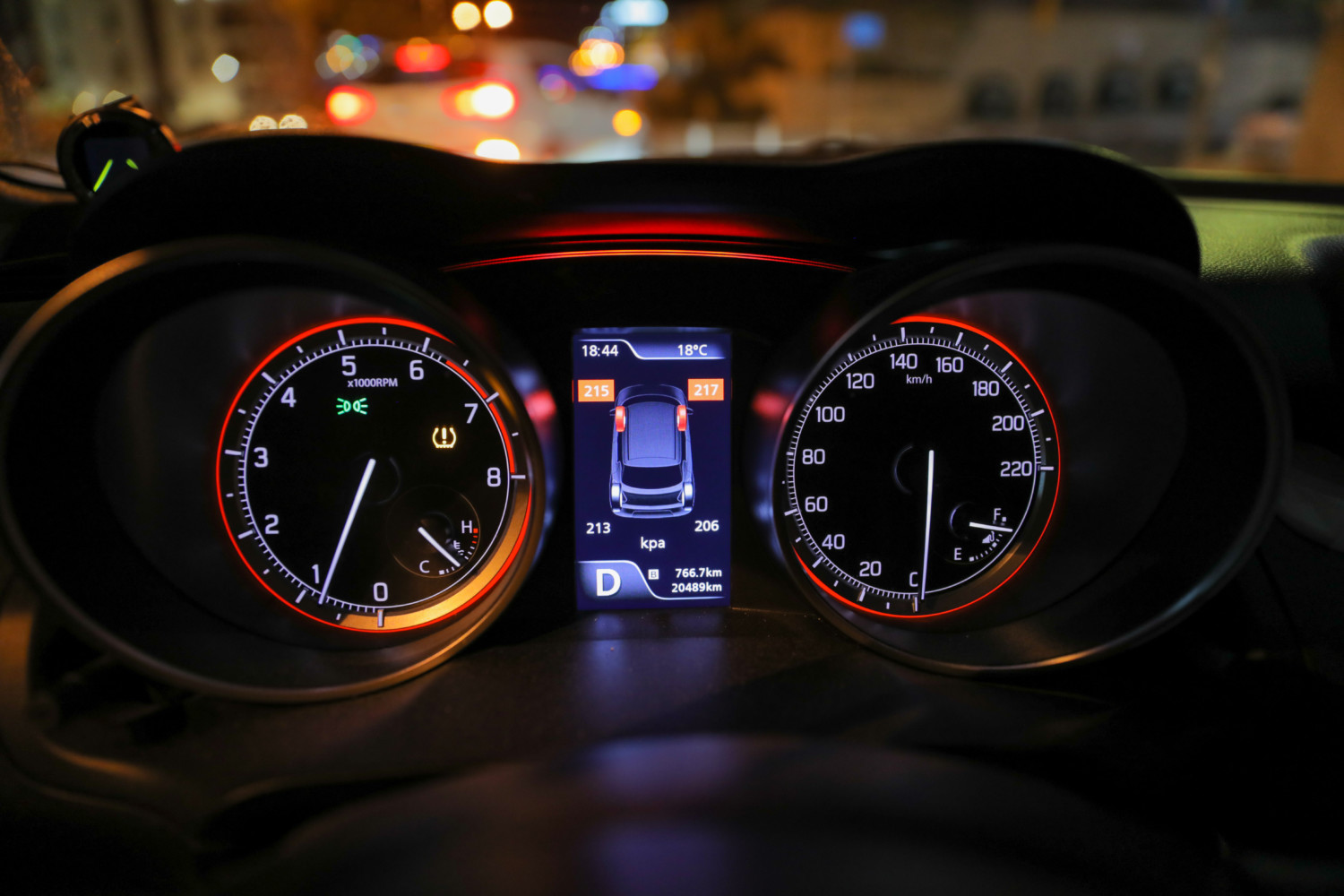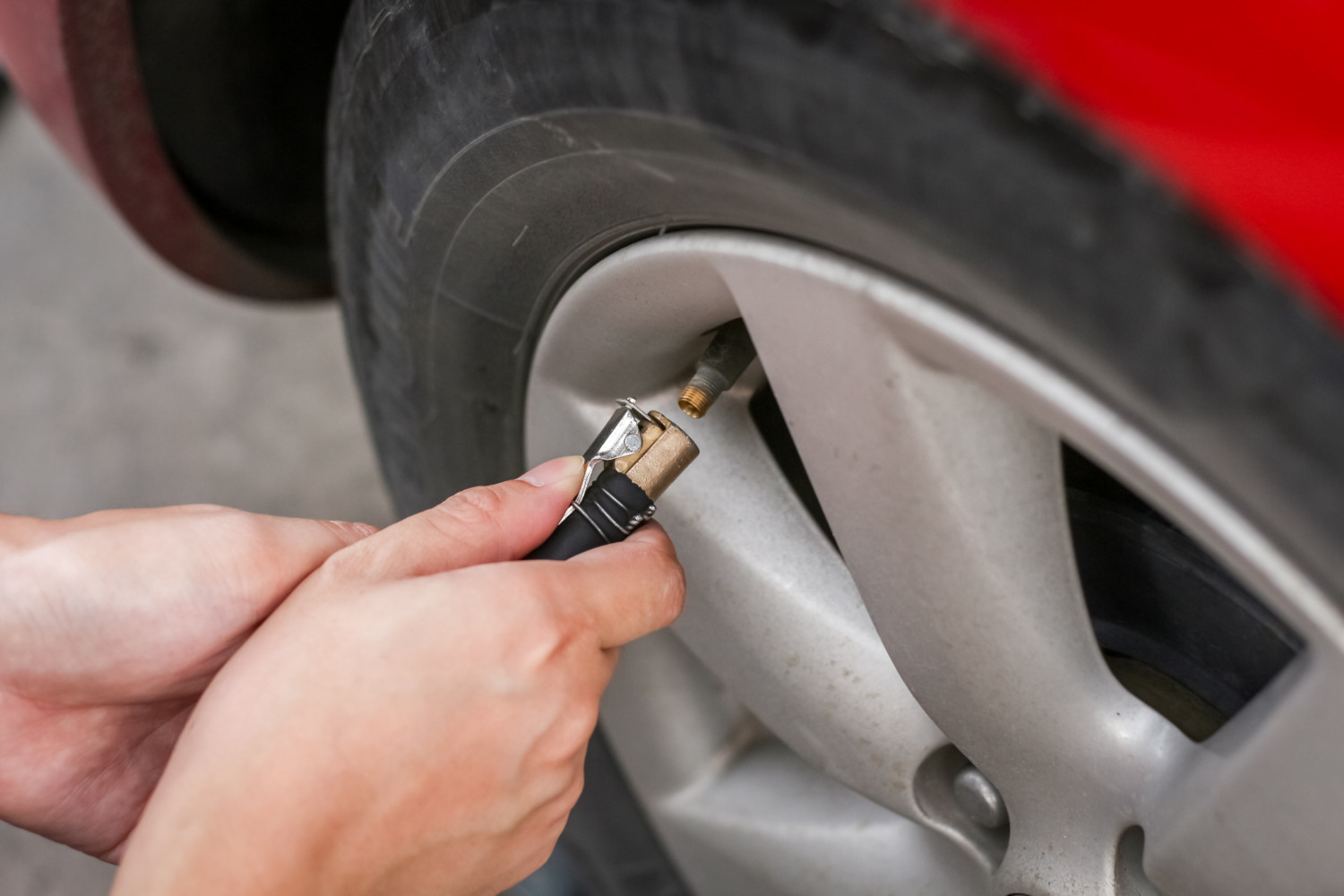The products and services mentioned below were selected independent of sales and advertising. However, Simplemost may receive a small commission from the purchase of any products or services through an affiliate link to the retailer's website.
If your vehicle is equipped with a Tire Pressure Monitoring System (aka TPMS), you have the benefit of being able to find out if your tires are properly aired up without constantly checking them. When your tire pressure light comes on, it could mean that one or more tires need some air. But there might be more to it. For instance, it could point to a slow leak.
Other factors can cause the TPMS light to turn on, so learning what to look for can help you decide how to proceed.
What Does the Tire Pressure Light Look Like?
The sensors used by some Tire Pressure Monitoring System are mounted in the wheels or braking system, while other tire pressure sensors are built into the tire valve stems. A TPMS may come standard in a vehicle or can be an aftermarket installation. No matter what type you have or when it was installed, the Tire Pressure Monitoring System has a single function: to measure the air pressure in your car’s tires.
The tire pressure light is a warning light that typically comes on when a tire’s air pressure is outside of the suggested range. This can mean the pressure is lower or higher than recommended. The latter will only happen if the tire gets overfilled.
As for the tire pressure light, it can often be found on the vehicle’s dashboard in the gauge cluster. However, you might have to cycle through different modes on a digital display to locate the TPMS information. The tire pressure light is usually depicted as a an amber- or yellow-colored tire cross-section with an exclamation point or “TPMS” also shown (it can be seen near the “7” on the RPM gauge in the photo below). The system might also provide information about which tires are affected.
You may notice that your tire pressure light gets triggered when the weather changes to cooler temperatures. This is because tire pressure declines when the temperature drops. Tires can also lose air gradually over time. Then, of course, there is always the chance of a puncture or wear causing the tire to leak air.

Steps to Take When the Tire Pressure Light Comes On
As soon as you notice the tire pressure light on your dash, you should check the air pressure of all four of your tires — or the affected one, if your TPMS tells you — as soon as you can. This is true even if your TPMS shows you the actual air pressure in each tire or if the light comes on and then goes off. Consumer Reports recommends checking the tires every few weeks anyway.
“You still need to check your tire pressure monthly,” Ryan Pszczolkowski, who runs tire testing at Consumer Reports, advised in the publication. “And remember, TPMS is a warning system, not a maintenance tool.”
Use a tire gauge to check the air. Remove the cap from the valve, press your tire gauge against the valve stem for a few seconds and read the number on the gauge while it is still attached. Be sure not to lose the valve cap and to replace it afterward. If you do lose them, which is easy to do, you can pick up extras at your local auto parts store or on Amazon.

Compare the number on the gauge to your vehicle’s recommended tire pressure, which you can find on a sticker inside the driver’s door or in your owner’s manual. If it is low, fill it to the recommended level. If a tire is overinflated, you can use the gauge to release enough air to reach the recommended pressure level. Often, the tires at the rear end of a car will need to be slightly more inflated than those at the front.
Do not inflate your tires to the level that’s actually listed on the tires. This is the maximum level of inflation a tire can withstand and not a recommendation. Filling to that level can cause a bumpy ride, difficulty handling the vehicle and possibly a blowout.
If your tire pressure light blinks on and off, that typically indicates one or more bad sensors or a system malfunction that will likely require professional attention.

How to Turn the Tire Pressure Light Off
The tire pressure warning light should go off automatically once the tires have the right amount of air. If not, drive for a few minutes. If the light doesn’t turn off on its own after about 10 miles, you might need to reset the TPMS manually. Check the vehicle’s owner’s manual for instructions on how to do this.
If the air pressure is not low, but the light is on, the tire pressure light could’ve been triggered by chilly weather. Try driving the car for a few miles to heat the tires and you may notice the light turns off (or, again, requires you to manually turn it off).
This story originally appeared on Simplemost. Checkout Simplemost for additional stories.


